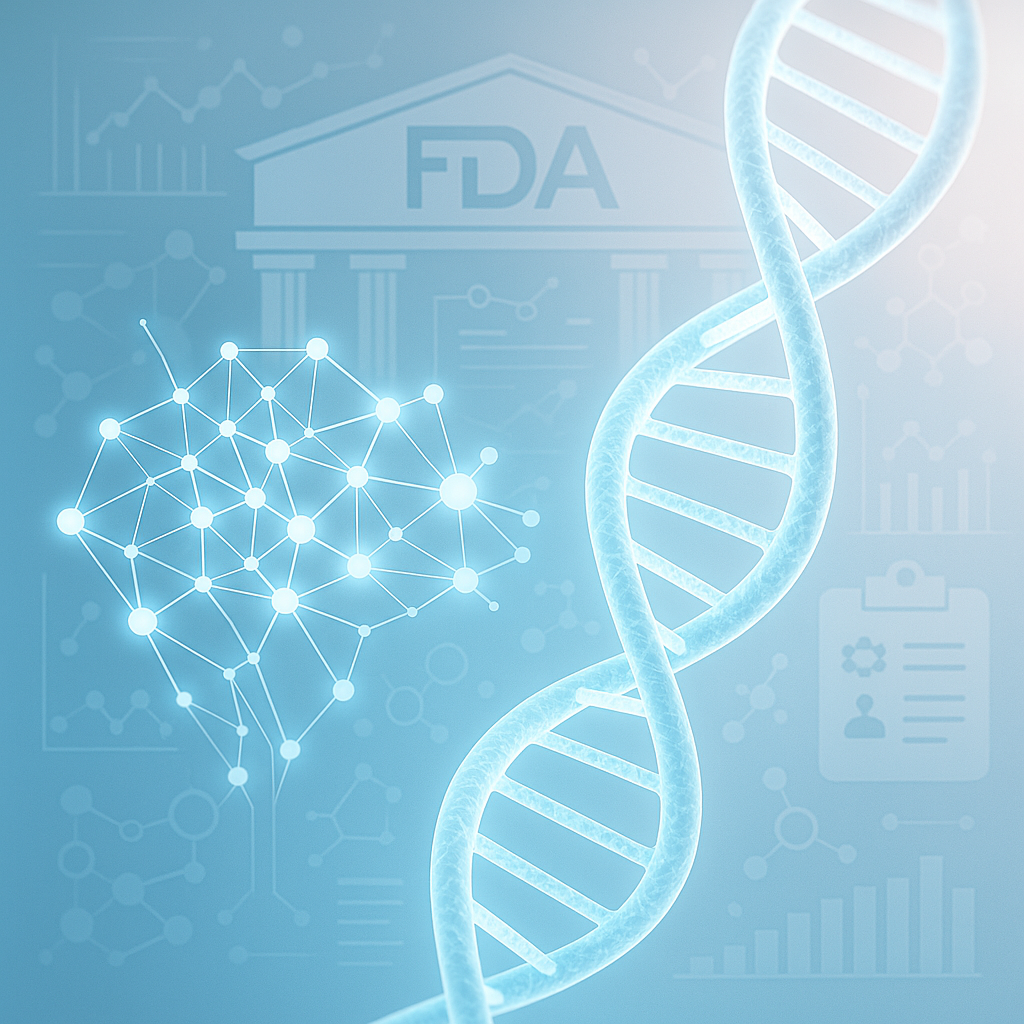
AI in drug development is rapidly transforming how therapies are discovered, tested, and submitted for approval—but until now, regulatory guidance has struggled to keep up. That changed in January 2025, when the U.S. Food and Drug Administration (FDA) published its first-ever draft guidance focused on the use of AI to support regulatory decision-making in the development of drugs and biological products.
At BioIntelAI, where we monitor the intersection of AI, life sciences, and regulatory frameworks, this moment represents a pivotal shift: clear expectations are finally emerging for how AI can—and should—be used in submissions to the FDA.
Why This Draft Guidance Is a Milestone
This draft marks the FDA’s first formal guidance on AI applications outside of medical devices, targeting AI tools that directly or indirectly support decisions about safety, efficacy, and product quality across the drug development lifecycle.
>>Read our post about FDA’s guidance on AI applications in Medical Devices here
Rather than limit innovation, the FDA aims to provide a risk-based framework that encourages responsible AI development while ensuring credibility in the regulatory process. As of early 2025, the agency has reviewed over 500 AI-enabled submissions—this guidance builds on years of experience and industry feedback.
Who Should Pay Attention
If your organization is using AI in any of the following scenarios, this guidance affects you:
- Biopharma companies applying AI to clinical trial design, patient eligibility, adverse event prediction, or quality control.
- Tech and AI developers offering tools used to generate data or models in regulatory filings.
- Regulatory affairs professionals preparing IND, NDA, or BLA submissions that include AI-driven analyses or outputs.
To be clear, the guidance is focused on AI tools whose outputs are used to inform or justify decisions in formal FDA filings—not general-purpose AI used for internal R&D or operational efficiency.
Core Concepts You Need to Know
✅ Context of Use (COU)
Sponsors must clearly define how an AI model is used in the regulatory decision-making process. This includes the decision being supported, the AI’s role, and its boundaries.
🔒 Important Scope Note: This guidance only applies to AI applications that directly or indirectly support regulatory decision-making relevant to FDA submissions—such as clinical trial analyses, safety assessments, or product quality evaluations. It does not cover AI used purely for discovery, administrative operations, or commercial purposes outside the regulatory scope.
✅ Risk-Based Model Credibility
The FDA introduces a two-part assessment:
- Model Influence: How directly does the AI affect the regulatory outcome?
- Decision Consequence: What’s the risk if the AI is wrong?
Higher-risk uses require stronger validation and controls.
✅ The 7-Step AI Credibility Framework
To determine if an AI tool is “credible” for its intended use, the FDA recommends the following steps:
- Define the regulatory question being addressed
- Describe the AI’s Context of Use
- Assess the risk (influence + consequence)
- Plan credibility activities (e.g., data quality, evaluation methods)
- Execute that plan
- Document results and deviations
- Evaluate adequacy—modify or restrict COU if needed
This ensures AI systems are fit-for-purpose, explainable, and trustworthy at every stage.
✅ Lifecycle Monitoring
AI models don’t stop evolving. Sponsors are expected to monitor performance post-deployment and report significant changes—like retraining or input data shifts—as part of their quality management systems.
✅ Early FDA Engagement
The FDA encourages sponsors to engage early—ideally before submission milestones—to align on expectations for validation, documentation, and whether a dedicated AI credibility report is needed.
What This Means for Biopharma AI Teams
Whether you’re developing or adopting AI internally, this draft sets a new bar for:
- Transparency around data, models, and assumptions
- Auditability of model logic and performance
- Governance and risk justification tied to regulatory decisions
It also creates a pathway for innovation—AI tools that meet these standards will face fewer regulatory hurdles in approval processes.
Final Thoughts
This FDA draft guidance signals a new era of accountability for AI in drug development. The agency is moving beyond high-level principles and offering structured expectations for how AI should be used in submissions related to safety, efficacy, and product quality.
The public comment period closed in April 2025, and the draft has already begun shaping how biopharma teams evaluate risk, establish model credibility, and document AI-driven decisions. Forward-looking organizations should begin aligning their practices with these recommendations now—particularly around lifecycle monitoring and transparency.
At BioIntelAI, we’re keeping a close eye on this evolving regulatory landscape and will continue to share insights as new developments unfold.
Resources & Further Reading
📬 Join 100+ life sciences professionals getting monthly AI insights. No spam, just signal.
